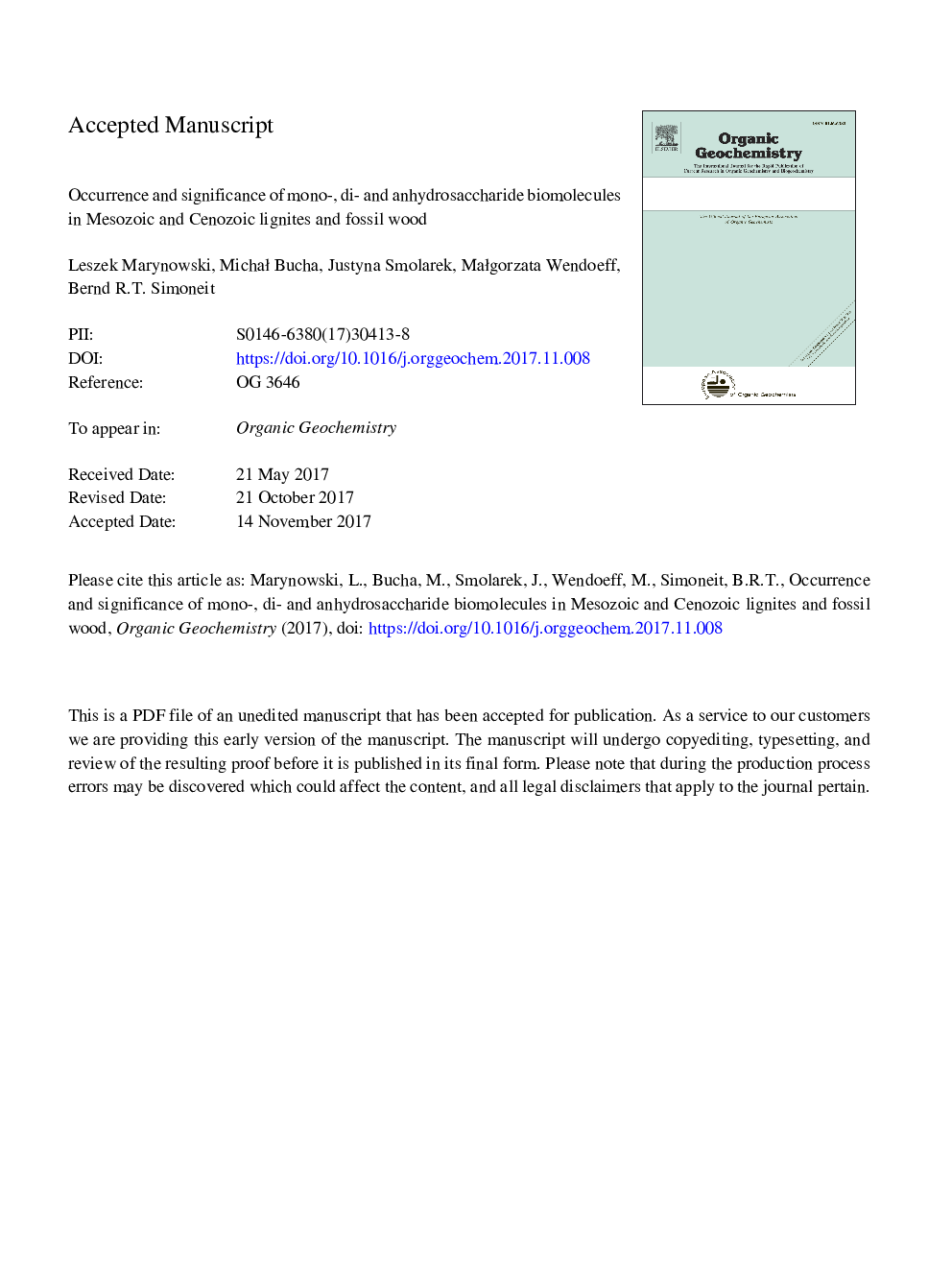| Article ID | Journal | Published Year | Pages | File Type |
|---|---|---|---|---|
| 7817052 | Organic Geochemistry | 2018 | 33 Pages |
Abstract
Mono-, di- and polysaccharides are common constituents of living organisms, but their occurrence and state of preservation in geological materials have only rarely been considered. Here, we present the monosaccharide, and for the first time the di- and anhydrosaccharide, identifications and distributions in Middle Miocene lignite and Middle Jurassic fossil wood samples. Detritic lignites contain fructose and glucose as dominant monosaccharides, and sucrose and trehalose as important disaccharides. Xylites contain monosaccharides (arabinose, arabinofuranose, glucose, and minor xylose and fructose), saccharols (erythritol, arabitol and mannitol), and also some disaccharides. The Middle Jurassic fossil wood samples contain glucose, glucofuranose and levoglucosan. The high content of holocellulose (up to 55â¯wt%) and co-occurrence of characteristic monosaccharides as arabinose, xylose and mannose in xylites suggests that not only cellulose, but also hemicellulose was preserved in samples as old as 13â¯Ma. Compounds like trehalose and mannitol appear to be products of wood-degrading fungi. Surprisingly, glucose, the most stable monosaccharide, and levoglucosan can occur in much older organic matter (ca. 168â¯Ma) as products from cellulose degradation, and possibly a remnant from wildfire burning of wood, respectively. Our findings confirm that saccharides can be preserved under favorable conditions in sedimentary organic matter of the Mesozoic to the Cenozoic eras, and can be used as specific biomarkers of cellulose and hemicellulose degradation, fungal metabolism, and wildfire events. However, we cannot exclude the possibility that at least part of the saccharides may be preserved in sedimentary rocks as the free compounds, common in plants and microorganisms.
Related Topics
Physical Sciences and Engineering
Chemistry
Organic Chemistry
Authors
Leszek Marynowski, MichaÅ Bucha, Justyna Smolarek, MaÅgorzata Wendorff, Bernd R.T. Simoneit,
